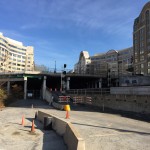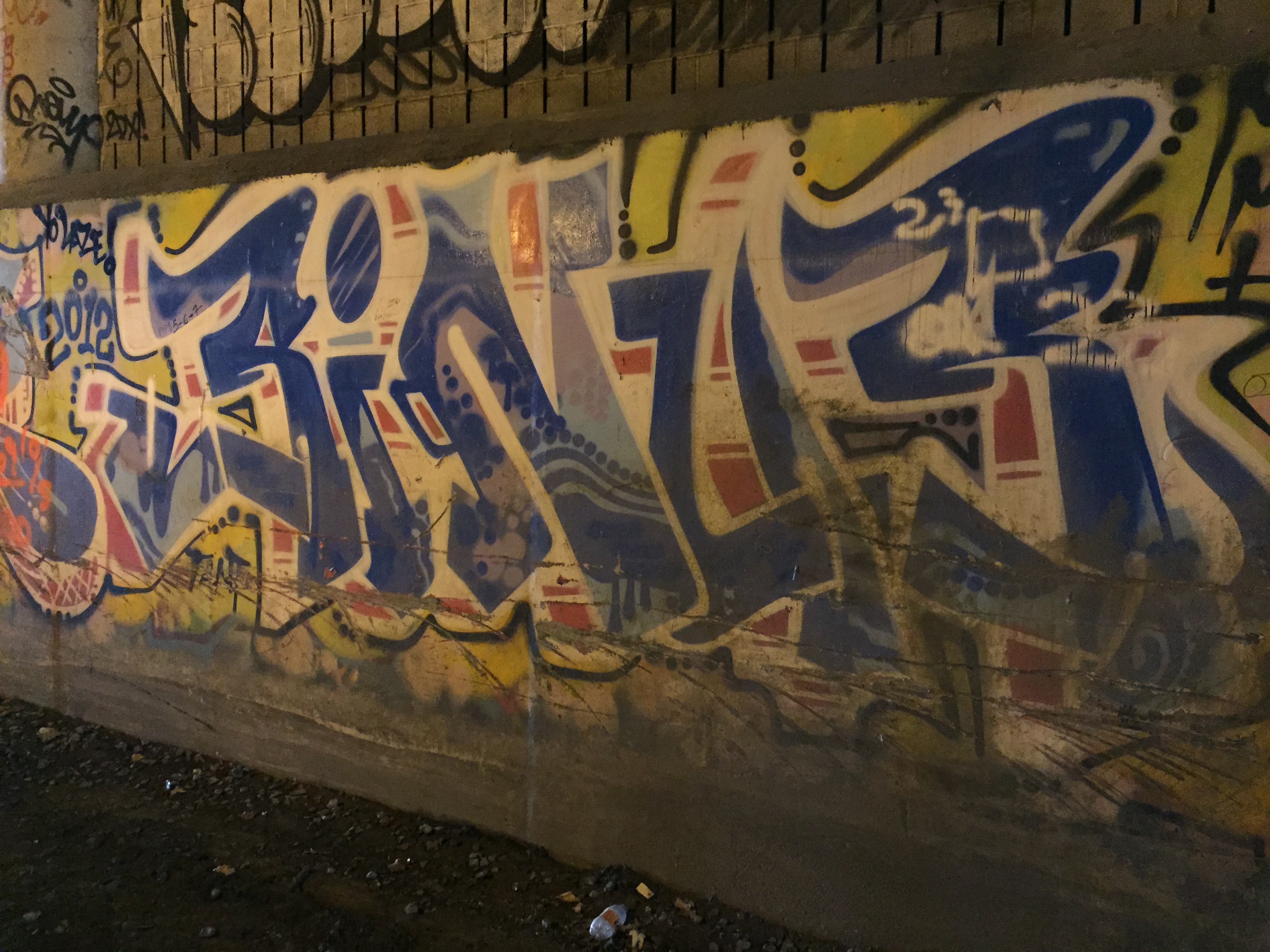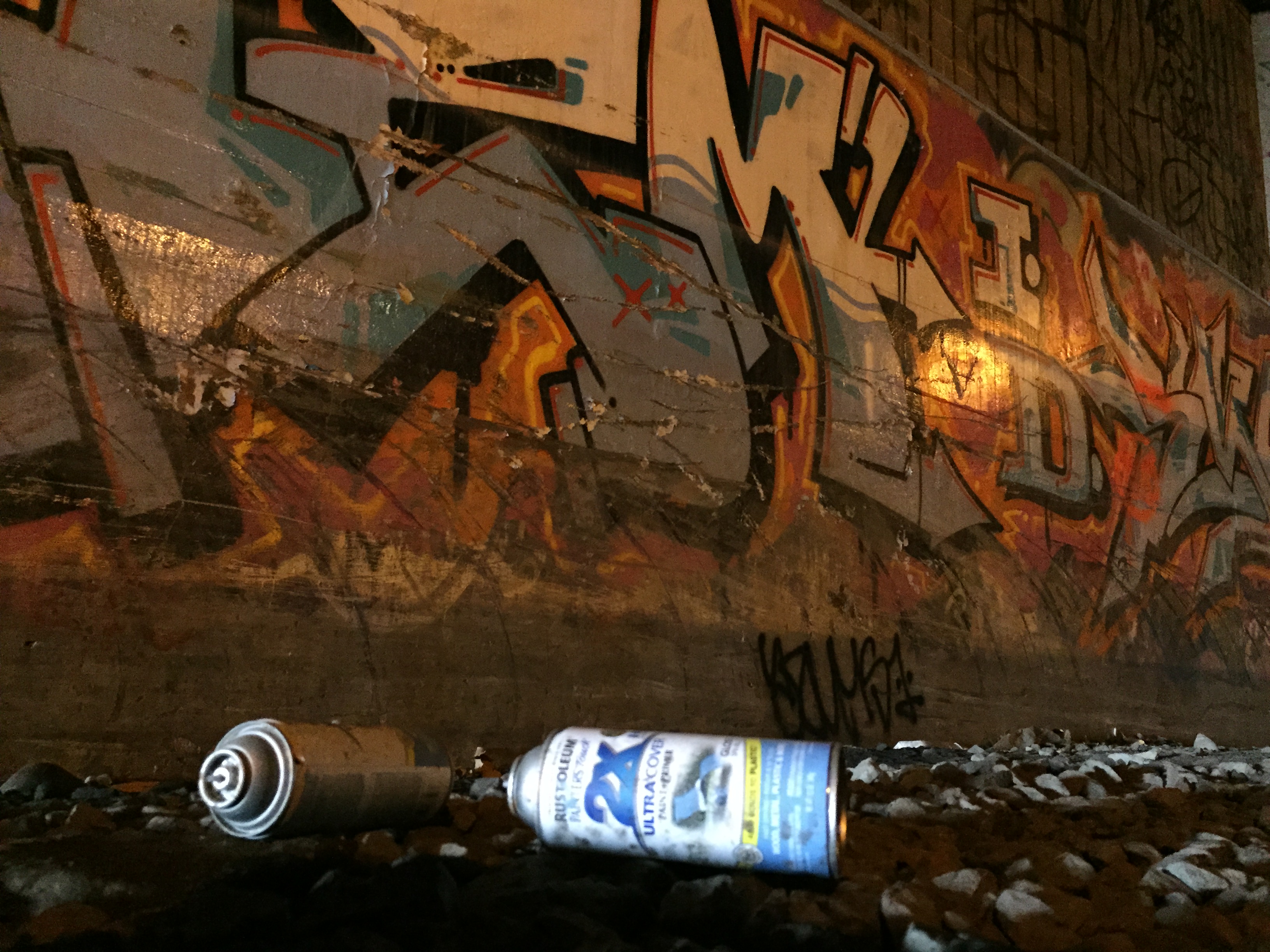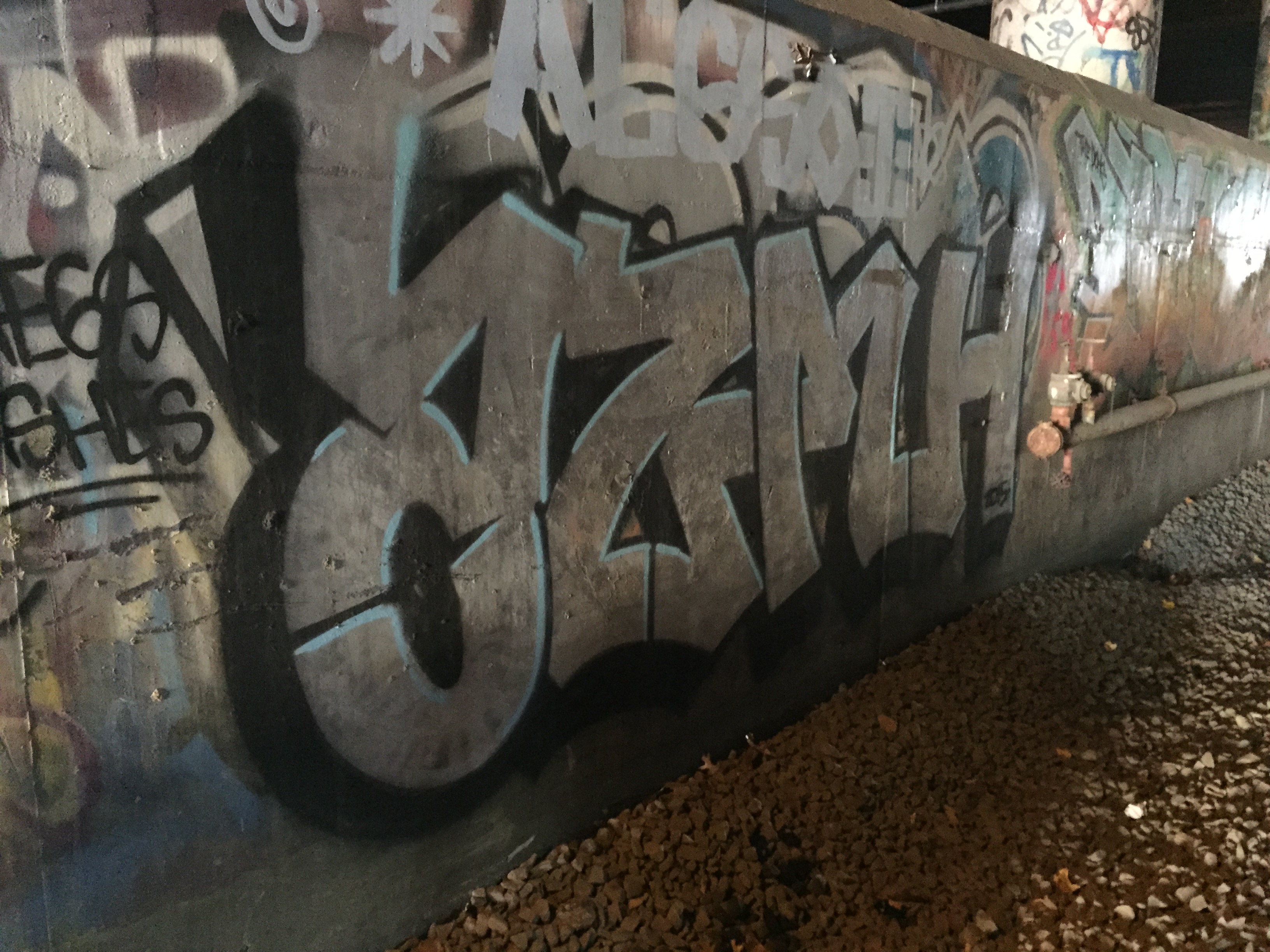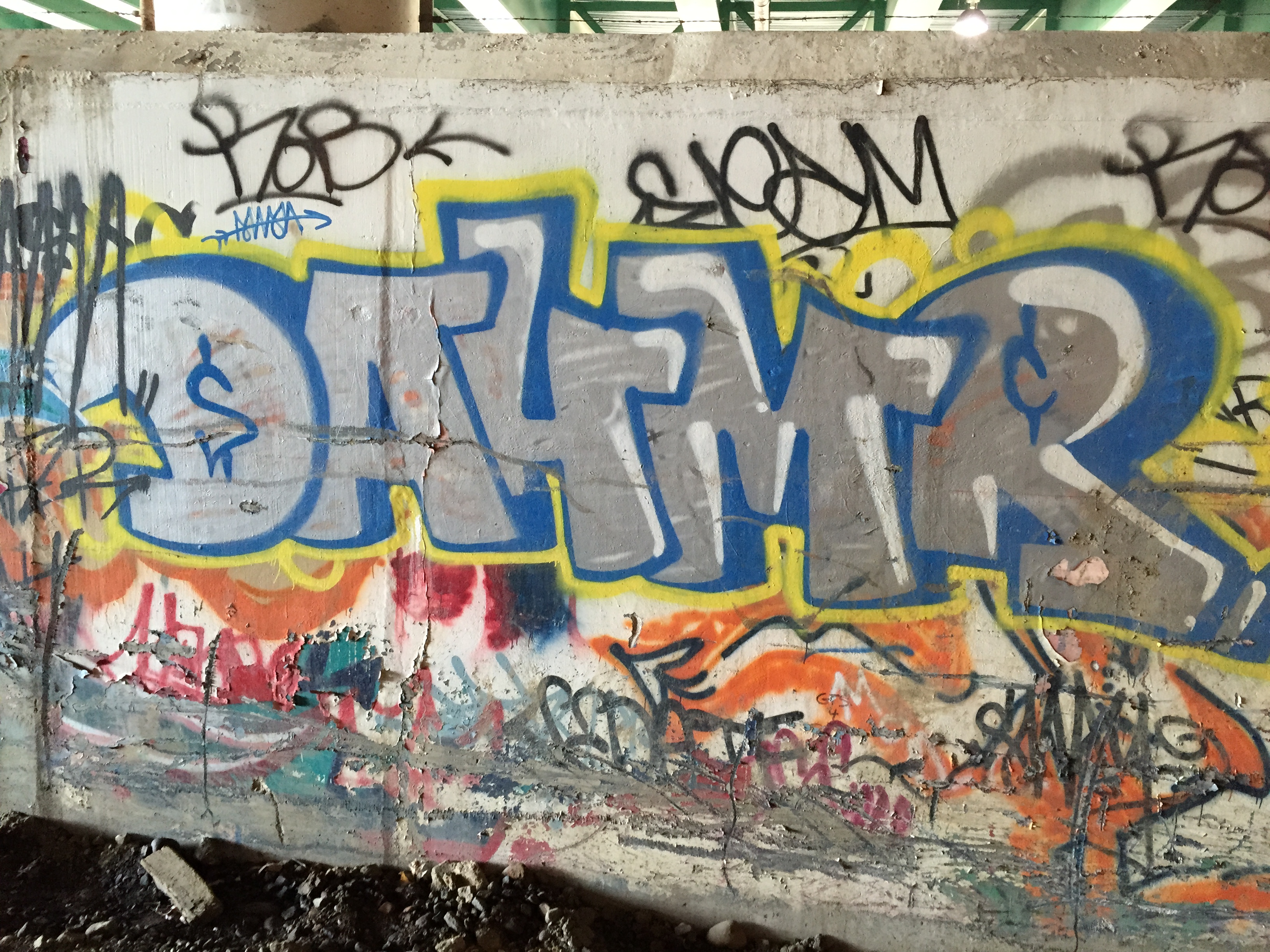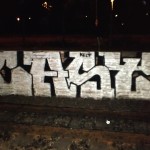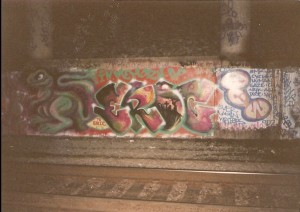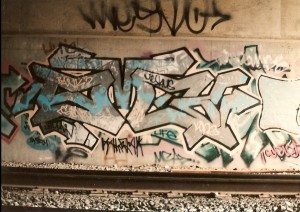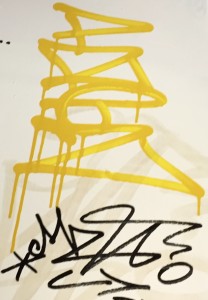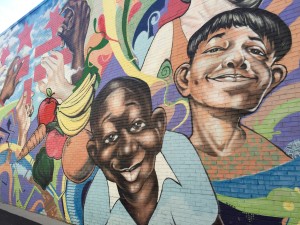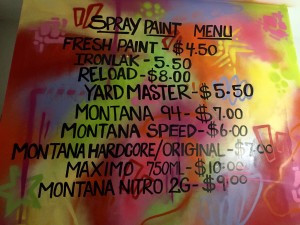Graffiti in DC – Still on the Fence
In the back corner of a parking lot less than half a mile away from world renowned Smithsonian museums on the National Mall, tucked under the 5-star Mandarin Oriental hotel, hidden in an Amtrak tunnel, there is a gallery of painting that most DC residents have never heard of.
The DC Graffiti Wall of Fame, or the Art Under Pressure tunnel as it is known to graffiti painters, contains work from artists, also known as taggers or writers, dating as far back as 1985. The layers of peeling paint on both sides of four different walls and the aerosol cans scattered across the train tracks are clearly visible throughout the 500 meter tunnel. The initials, names and pictures sprayed on the walls in bubble letters tell a story of teenage rebellion that straddles a paper-thin line between criminal activity and city-sponsored beautification projects.
At a time when residents of DC are hearing about rising condo prices, bike lanes and gentrification, more than 85 graffiti-themed murals, 52 of them city sponsored, now legally adorn the walls of some of the most recognizable buildings in the city. The tunnel is a reminder of a not-so-distant past when Washington was known as the murder capital of the world, Chuck Brown was rocking the Go-Go and graffiti as an art-form was, both literally and figuratively, underground.
CAST – Martin Castro
Martin Castro, a shop owner and restaurateur in Buenos Aires, was one of the original taggers to paint the Art Under Pressure tunnel. He was profiled in Roger Gastman‘s coffee table book on graffiti – Free Agents – and is listed in Complex magazine as number 14 on the list of top 25 all time greatest DC writers.
“I’m not an artist, never was” Castro said in a Facebook chat, “I’m a vandal.”
“There were no muralists in the ’90s, there were guys that made the transition, and that was ok, as long as you had earned yours.”
Castro remembers it fondly, listing tag names of writers who later came to be known as legends in the world of underground graffiti.
“The tunnel was called Art Under Pressure, AUP, and it was only known to a few people back then. SMK, Cycle, MESK, REM, WAKE and a couple more. Nobody else.” Castro said, “It used to be a secret, I mean it still is, but not like it was.”
Castro tells stories of beefing, or fighting with other taggers who had gone over, or defaced another’s tag.
“I would go there everyday,” Castro continued, “to see who I caught.”
The Law
Hugh Carew served on MPDC from 1972 to 2001 as an officer, detective and sergeant. Castro knew him as “the head of the vandal squad.”
“CAST was a writer who was well displayed all over,” Carew said of Castro, in a Facebook chat. “Personally, he was an interesting guy to talk with and knew the graf scene, nightclub scene from the inside, however, in our conversations we didn’t compromise ourselves or each other. We were friends, but respected the positions we held….his in his world, and mine with the police.”
Carew believes there are two different types of graffiti writers
“There were the hardcore graf….urban guerilla types with whom Martin was most involved, and then the arty types. The hardcore people were in some cases the hard-asses. They were associated with assaults/drugs/the nightclub scene.”
Carew added that graffiti arrests often involved additional charges for weapons or drugs.
DC code defines graffiti as defacing public or private property, which is “to write, mark, draw, or paint, without the consent of the owner.”
“The usual graffiti arrest resulted not from one incident, but several involving different complainants in different locations,” Carew explained. Damage to a property of more than $250 resulted in a felony charge, so “a plea bargain could easily involve several felony charges.”
Castro was arrested on graffiti related charges in 1998 and subsequently deported to Argentina.
PrezSTM – The Tagger
PrezSTM, 25, has been active in the DC illegal-graffiti scene for the past 11 years.
“There’s a lot of graffiti writers out here who go over murals for kicks. For shits and giggles, I don’t really agree with stuff like that, I think it’s pretty low,” Prez said in an interview.
For him graffiti has always meant camaraderie, having a crew.
“Sometimes I go out alone, but a lot of times I go out with my crew,” Prez said about guys, “who became family over time, just by painting. “
“When I was 14, I saw my friend doing graffiti and I was like, yo, did you paint that?” Prez said, “That’s tight. Since then I was like, I gotta learn this.”
“Spray paint, markers, there’s just so many tools in graffiti,” Prez continued, “as long as you get your name up, it doesn’t matter. I don’t really search for a goal, or fame, I just do it cause it’s a lifestyle.”
“I’ve never been paid to paint anything.” Prez trailed off
PrezSTM provided a glossary of graffiti terms and slang.
The Murals
In 2007, DC city council introduced MuralsDC, a city funded program aimed at deterring local teens from illegal graffiti. With an annual budget of $100,000, the program has produced 55 murals around the city. Taggers call these walls legals.
While experiencing an uptick in 2015, graffiti clean-up requests in the district have been decreasing since 2012
Nancee Lyons, public affairs specialist and MuralsDC coordinator for the DC Dept. of Public Works, said that the uptick in 2015 may have been due to an increase in overall crime rate in the city and characterizes the program as a success.
“We were approached by a condominium on Carrol Street, NW. The Red line ran along the side wall of the building giving taggers the perfect canvass to have their work seen by thousands of metro riders each day. As you can expect, the wall was constantly bombed. Management would paint over the graffiti and more graffiti would be back the following week. It was an endless cycle. We painted a mural on that property in 2009 and it stayed tag free for about four years. To go from having to paint it monthly to four years without it being vandalized is a huge success story for these types of programs,” Lyons said in an email.
Words, Beats and Life is a hip-hop themed non-profit that works with Lyons and DPW to find artists and wall space. Executive director Mazi Mutafa said “The program used to do outreach specifically to young people doing illegal graffiti because when the program started there were a lot more young people doing illegal graffiti.”
Mutafa believes that public art acts to positively influence not just young people but communities as well.
“Today, it’s more about reaching out to young people who go to schools that don’t have art programs,” Mutafa continued, “or young people for whom the resources we have are not readily available. We try to engage them in an apprentice process that culminates in them being paid to assist master artists in the production of large scale murals.”
Eric B. Ricks – The Artist
Eric B. Ricks is one of the few street artists who has been able to turn his hobby and art into a career.
On December 8, 2015, he finished his 8th mural in the district, this one a private commission in the alley shared with Ben’s Chili Bowl at 1209 U St. on the side of Dr. Edward T. Buford III’s dentist office.
Dr. Buford, known as Dr. B., has been practicing dentistry at that location for 20 years.
“I paid good money for it, I love it,” Buford said in a phone call, when asked about the mural. “I would have liked more fuchsia, but I love it.”
Ricks also painted the mural opposite the doctor’s office on the east wall of Ben’s, meaning that both walls in the alley are covered in Ricks’ work.
“My personal goal is to see how far I can actually push the aerosol craft,” Ricks said during a break from painting on Tuesday. “I finally own an alley and I didn’t even have to pay for it.”
“The more I start to study history, the more I start to look at my place in history and I’m like Whaaa!, I’m at the forefront of this new art form!” Ricks continued, “and now this stuff is not just in galleries but museums, now the establishment is starting to open their eyes to what the power of this medium is. And the country is starting to own it!”
“It’s not just young kids destroying stuff, anymore.”
See more from Eric B. Ricks HERE
Art Under Pressure – The Shop
Art Under Pressure, or AUP, is now a skateboarding and graffiti supply shop near the corner of 14th and U St.
While the employees remain mum about the obvious homage to the tunnel, the shop has 150 sqft of caps, tips, markers, pens, and a lot of spray paint.
PrezSTM said that the owner of AUP, Zak Mason, and a former manager Cory Stowers, were known to have painted in the tunnel.
Stowers now paints murals in association with MuralDC.
